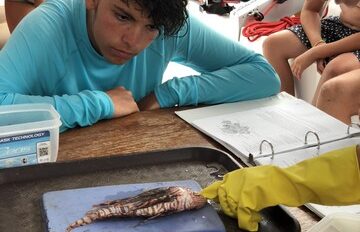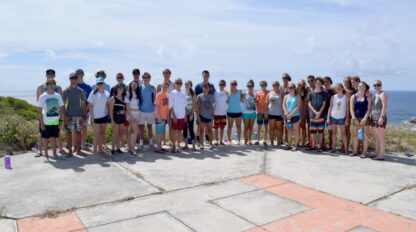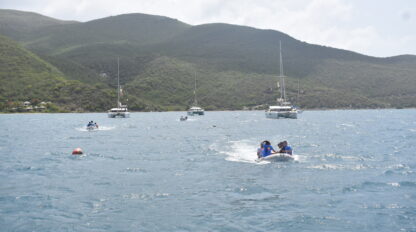Recognizing World Turtle Day
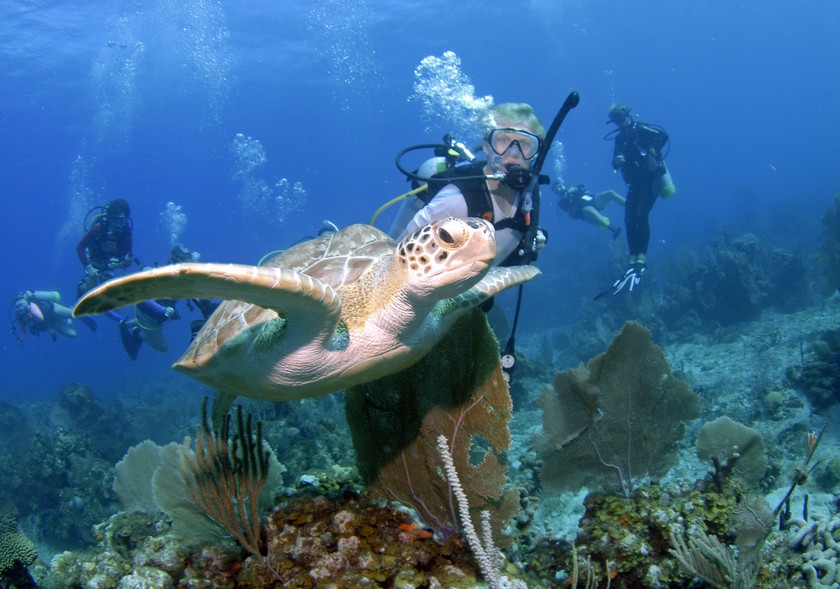
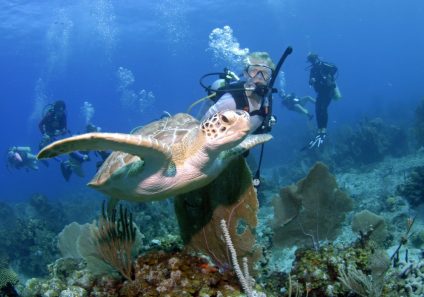 The British Virgin Islands are home to a few different species of turtles. We most commonly spot green sea turtles hanging around our yachts on program. These gentle giants love to munch on the rich sea grass beds that grow in some of our favorite anchorages and mooring fields, like Cooper Island Beach Club and Prickly Pear Island. Sometimes, we’ll encounter hawksbill turtles hanging around coral reefs while on dives or snorkels. Hawksbill turtles’ food of choice is sponge, like the giant barrel sponge and purple sea sponge that grow on our local reefs. Unfortunately, these sightings are rarer, as hawksbills are critically endangered, and still hunted for their beautiful shells. The rarest turtle in the area is the leatherback sea turtle. Sail Caribbean legend has it that they can occasionally be spotted way offshore on the north side of Tortola. Adult leatherbacks can be as heavy as 1500 lbs and up to 7.2 ft long!
The British Virgin Islands are home to a few different species of turtles. We most commonly spot green sea turtles hanging around our yachts on program. These gentle giants love to munch on the rich sea grass beds that grow in some of our favorite anchorages and mooring fields, like Cooper Island Beach Club and Prickly Pear Island. Sometimes, we’ll encounter hawksbill turtles hanging around coral reefs while on dives or snorkels. Hawksbill turtles’ food of choice is sponge, like the giant barrel sponge and purple sea sponge that grow on our local reefs. Unfortunately, these sightings are rarer, as hawksbills are critically endangered, and still hunted for their beautiful shells. The rarest turtle in the area is the leatherback sea turtle. Sail Caribbean legend has it that they can occasionally be spotted way offshore on the north side of Tortola. Adult leatherbacks can be as heavy as 1500 lbs and up to 7.2 ft long!
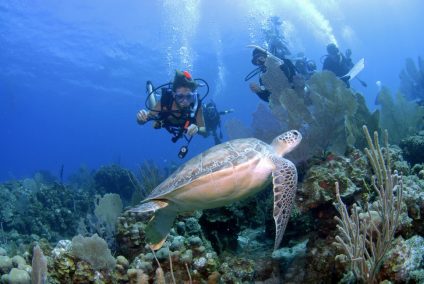 The unique conditions of these islands make them a near perfect habitat for turtles. In fact, a 2014 study found that hawksbill turtles near Anegada, our northernmost island, have some of the fastest growth rates of their species anywhere in the world! The authors expect that this is due to our warm, thermally stable waters. Sea turtles are ectothermic (they do not produce their own body heat, the way that we do), so the warmer the water, the faster their metabolism will be, and the faster they can grow. Additionally, the shallow shelf reef that borders many of the islands provides ample food and shelter for growing turtles. All of this is great news for sea turtle population recovery!
The unique conditions of these islands make them a near perfect habitat for turtles. In fact, a 2014 study found that hawksbill turtles near Anegada, our northernmost island, have some of the fastest growth rates of their species anywhere in the world! The authors expect that this is due to our warm, thermally stable waters. Sea turtles are ectothermic (they do not produce their own body heat, the way that we do), so the warmer the water, the faster their metabolism will be, and the faster they can grow. Additionally, the shallow shelf reef that borders many of the islands provides ample food and shelter for growing turtles. All of this is great news for sea turtle population recovery!
Shannon Gore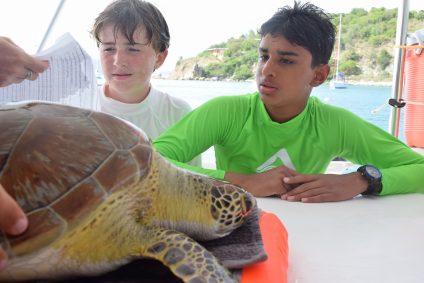 , PhD. and Managing Director of ARK (The Association of Reef Keepers), is one of the authors of the aforementioned study and also a dear friend to Sail Caribbean’s turtle tagging activities. She facilitates training of procedures and protocols year after year for our team of turtle-tagging staff members.
, PhD. and Managing Director of ARK (The Association of Reef Keepers), is one of the authors of the aforementioned study and also a dear friend to Sail Caribbean’s turtle tagging activities. She facilitates training of procedures and protocols year after year for our team of turtle-tagging staff members.
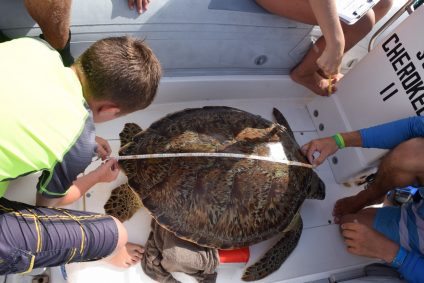
The 2014 study used highly similar tagging methods that we use on our Foxtrot program, where we work with the local Conservation & Fisheries department to tag and release turtles to assess growth and population. We use both PIT (passive integrated transponder) tags and flipper tags to ensure we’re able to track turtle populations over the years. We often re-catch some of the same turtles every summer, and have been able to track how fast their carapaces (shells) are growing! This program has led to our staff and students developing close relationships with the local turtle populations. Sharing this turtle love with our students is part of what makes the Foxtrot program, and our marine science programs’ curriculum so fantastic!
![]() About The Author: Gray McKenna’s passion for outdoor education started with a summer internship at Sail Caribbean in 2015, and continues to this day now holding the role of Program Director of our college-age Ocean Adventure! Gray holds a B.S. in Marine Biology from Northeastern University, and has taken classes and done research diving in all sorts of marine environments, from the Gulf of Maine to the Caribbean, and from the Puget Sound & Salish Sea down to the Panamanian Pacific. Gray loves bringing their experience to Sail Caribbean’s engaging marine science curriculum. They are an avid mariner, and have spent a season as a deckhand & educator onboard the 103 year old schooner Adventuress, facilitating environmental & sailing education trips in the Puget Sound. After this summer season, Gray will return to the Good Ship Adventuress as a relief engineer. Gray plays guitar, banjo, and ukulele, and loves bringing music aboard the boats at Sail Caribbean.
About The Author: Gray McKenna’s passion for outdoor education started with a summer internship at Sail Caribbean in 2015, and continues to this day now holding the role of Program Director of our college-age Ocean Adventure! Gray holds a B.S. in Marine Biology from Northeastern University, and has taken classes and done research diving in all sorts of marine environments, from the Gulf of Maine to the Caribbean, and from the Puget Sound & Salish Sea down to the Panamanian Pacific. Gray loves bringing their experience to Sail Caribbean’s engaging marine science curriculum. They are an avid mariner, and have spent a season as a deckhand & educator onboard the 103 year old schooner Adventuress, facilitating environmental & sailing education trips in the Puget Sound. After this summer season, Gray will return to the Good Ship Adventuress as a relief engineer. Gray plays guitar, banjo, and ukulele, and loves bringing music aboard the boats at Sail Caribbean.
